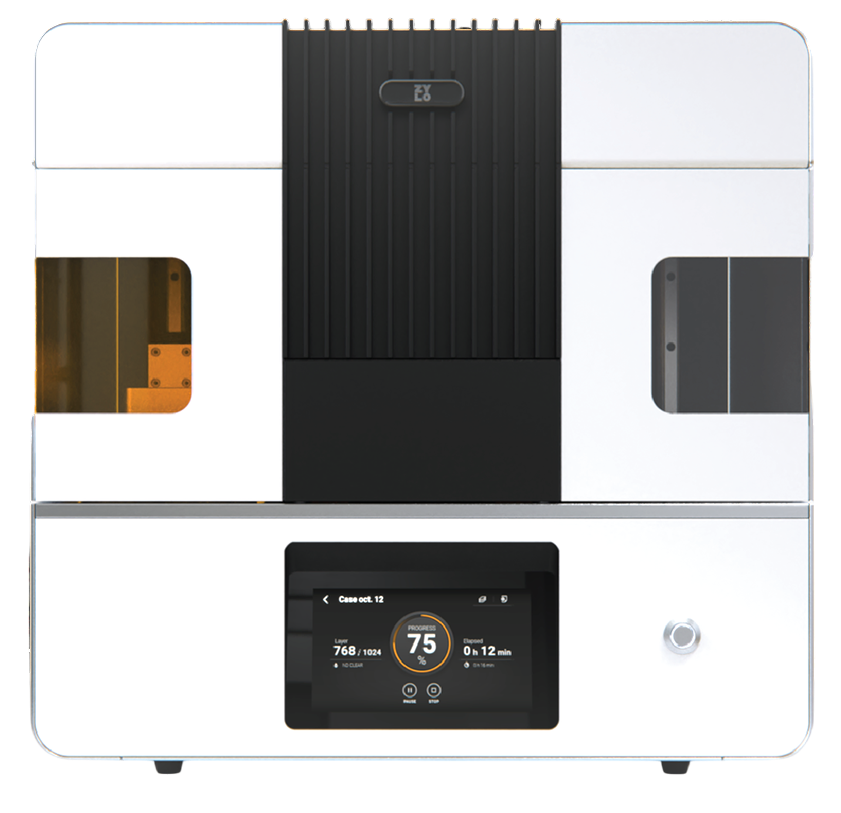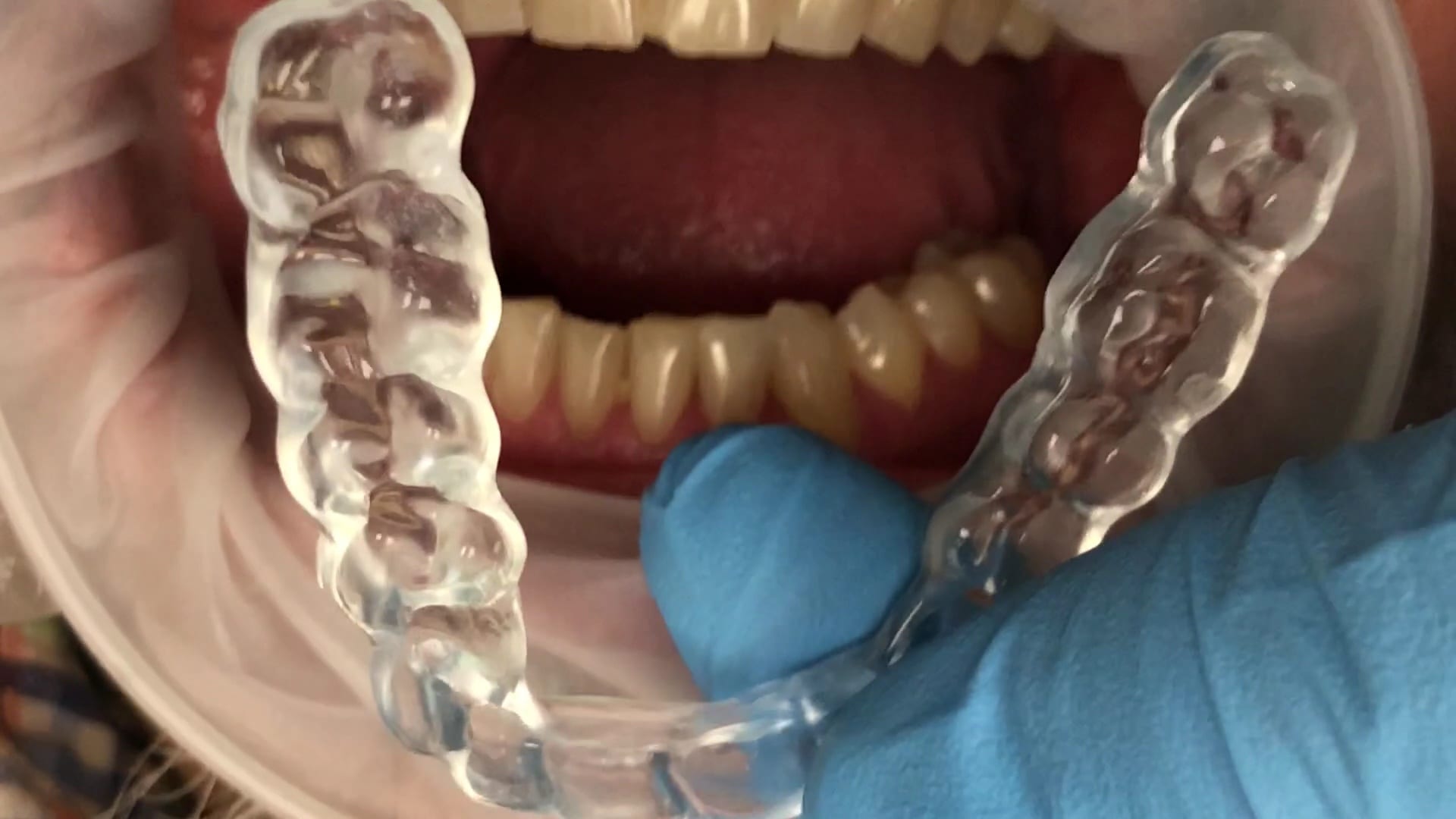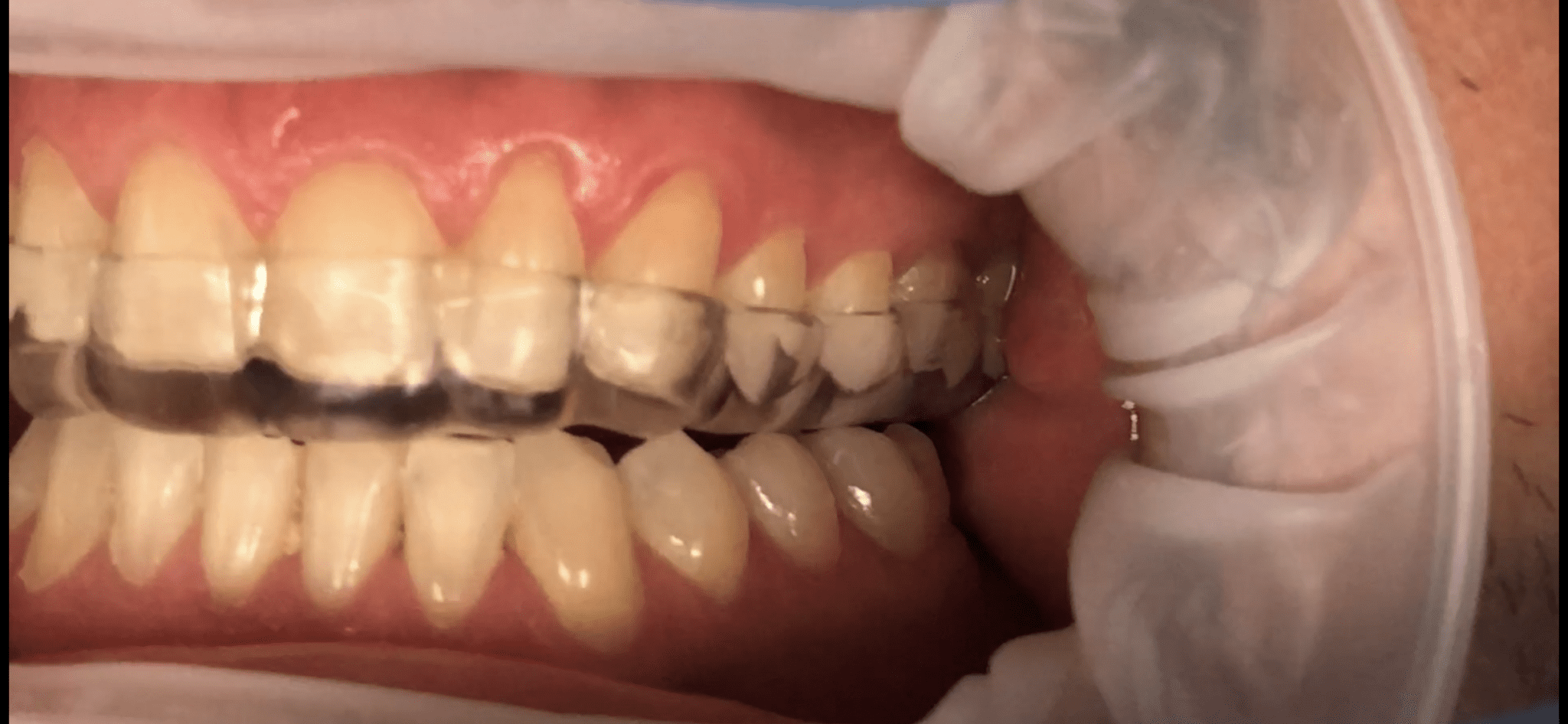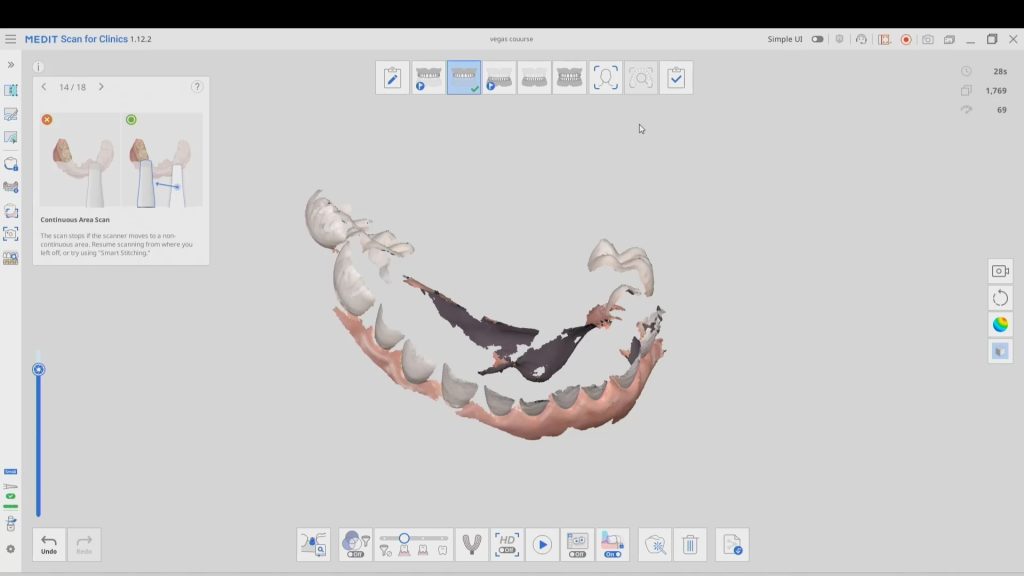
One of our favorite procedures to perform with digital dentistry are occlusal appliances where you open the vertical (for an occlusal guard for bruxism) or when you open the vertical and advance the jaw forward to create an airway passage for snoring and/or sleep appliances.
A method that is very simple that we use is to capture two buccal bites while the patient is biting on two cotton rolls on both sides. You place the cotton roll in such a manner so that the second molars and their clearance are clearly visible.
This allows you to asses the thickness you can achieve in the appliance and to assess the open bite in the anterior. It is very important to tell the patient you will be capturing the bite on both sides and that they should hold that position until you instruct them to otherwise. The cotton rolls give them the perfect tactile sensation to keep them in place without opening or closing their jaws. The best part of this is when the appliance is delivered, there is little to no adjustment to perform.

Once the upper jaw and the lower jaw are imaged, the data is then transferred to CAD software, in this case exocad. You can see how we first edit the mesial contact of the first molar in anticipation of future dental work. We bulked out the area to accommodate any future dental work. The occlusal scheme is taken into consideration when designing the prosthesis which is then milled and delivered to the patient
We take a CT scan on all new patient exams and there are quite a lot of diagnostic information you can gather from that data set by itself, or for orthodontic measurements. Here, we merged the data sets and reveal how you can pick up on matters like a deviated septum and a mucous retention cyst. You can also utilize these data sets to view the head of the condyle at maximum intercuspation or with the appliance in place. The appliance did not need a single adjustment neither on the occlusal surface, nor in the intaglio





















You must log in to post a comment.